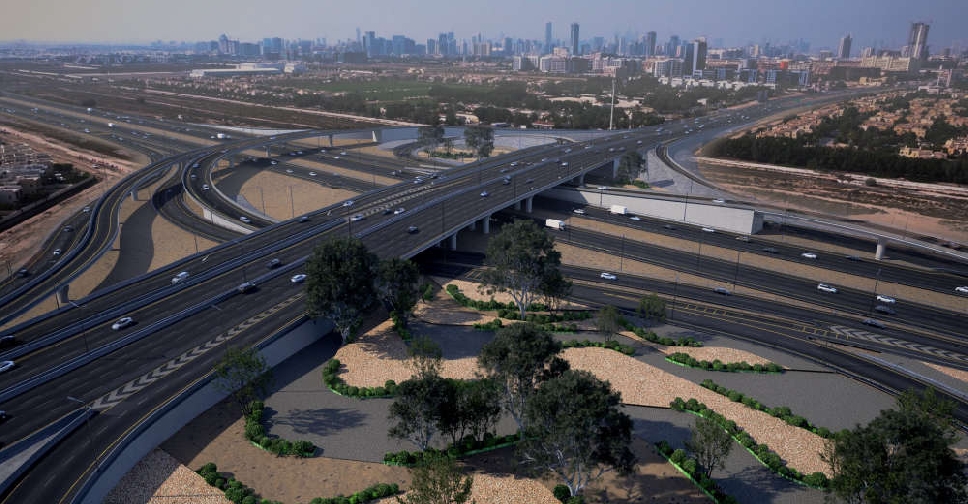Dubai's Al Qudra Street Development Project: A Milestone in Urban Mobility and Connectivity
In a bold move aimed at transforming the urban landscape of Dubai, governmental authorities have unveiled plans for the Al Qudra Street Development Project, with an investment of AED 798 million. This ambitious endeavor spans from the junction of Al Qudra Street with Sheikh Mohammed bin Zayed Road and extends through Sheikh Zayed bin Hamdan Al Nahyan Street, ultimately reaching Emirates Road. The initiative is positioned as a critical component in Dubai’s strategy to optimize traffic flow, enhance mobility for residents and tourists, and accommodate the city’s rapid population growth.
The project entails significant infrastructural advancements, including the construction of multiple interchanges, the addition of 2,700 meters of bridges, and the expansion of existing roadways by 11.6 kilometers. These enhancements aim to elevate the street’s capacity, thereby cutting down travel times dramatically—from an average of 9.4 minutes to a mere 2.8 minutes. This improvement is projected to benefit a population segment valued at approximately 400,000 residents and visitors who traverse this essential corridor each day.
Mattar Al Tayer, the Director General and Chairman of the Board of Executive Directors of the Roads and Transport Authority (RTA), articulated the overarching vision for the project. He noted that it represents a crucial step towards enhancing the vertical (East-West) road network in Dubai, efficiently linking key areas such as Arabian Ranches 1 and 2, Dubai Motor City, Dubai Studio City, Akoya, Mudon, DAMAC Hills, and The Sustainable City.
In addressing the technical details, Al Tayer reiterated the project’s primary objective: to relieve congestion and improve overall traffic efficiency across critical intersections. The Al Qudra Street Development Project aims to facilitate seamless traffic movements toward Emirates Road, while ensuring connectivity to Al Qudra City and its surroundings. As urban centers expand, the improvement of these arteries is seen as essential for maintaining road safety and fostering economic activity in burgeoning neighborhoods.
Strategic Enhancements for Traffic Fluidity
One of the standout features of the project is the enhancement of the intersection between Al Qudra Street and the access road connecting Arabian Ranches and Dubai Studio City. This upgrade will witness the construction of a 600-meter bridge, designed to accommodate four lanes in each direction. The anticipated outcome is an increase in traffic capacity from 6,600 vehicles per hour to an impressive 19,200 vehicles per hour, simultaneously reducing wait times at the intersection from 113 seconds to 52 seconds.
Moreover, Al Tayer detailed plans for additional infrastructure improvements at the intersection of Al Qudra Street with Sheikh Zayed bin Hamdan Al Nahyan Street. This includes a 700-meter bridge featuring seven lanes in both directions, accompanied by auxiliary lanes on side ramps to streamline directional transitions without disrupting the main traffic flow. The expected increase in throughput at this intersection is from 7,800 vehicles per hour to 19,400 vehicles per hour, which will significantly reduce waiting times from 393 seconds to just 60 seconds.
Beyond these enhancements, plans also encompass the construction of a 500-meter bridge, designed to better facilitate traffic movement from Al Qudra Street to Sheikh Zayed bin Hamdan Al Nahyan Street toward Jebel Ali and a 900-meter bridge catering to traffic heading in the direction of Downtown Dubai and Dubai International Airport.
Aiming for Comprehensive Connectivity
The project’s scope extends further, featuring the construction of service roads along a three-kilometer stretch on either side of Sheikh Zayed bin Hamdan Al Nahyan Street. This aspect is particularly aimed at enhancing connectivity with surrounding developments, thereby fostering integrated community growth and streamlined transportation.
In a subsequent phase of development, a new road will link the southern part of the planned developments, extending 4.8 kilometers to connect with Emirates Road, improving inward and outward access for burgeoning neighborhoods such as Town Square, Mira, and DAMAC Hills 2. This enlargement initiative will streamline traffic by adding lanes to the Emirates Road corridor, further boosting connectivity and supporting Dubai’s rapid urbanization efforts.
In conclusion, the Al Qudra Street Development Project is more than just a road upgrade; it symbolizes Dubai’s commitment to creating a sustainable, accessible, and interconnected urban environment. As the emirate continues to grow at an unprecedented pace, such initiatives serve not only to facilitate current mobility needs but also to lay the groundwork for future development.
—
Tags: #Dubai, #BusinessNews, #EconomyNews

